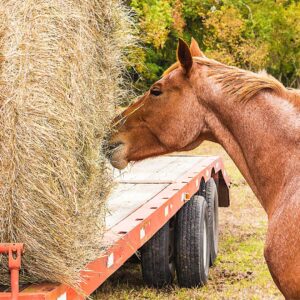 Aside from pasture, hay is the predominant forage consumed by horses. So, its value in equine diets is unquestionable. During certain times of year, hay may be the only forage available to horses. Therefore the selection of well-preserved hay harvested at the appropriate stage of maturity is critical.
Aside from pasture, hay is the predominant forage consumed by horses. So, its value in equine diets is unquestionable. During certain times of year, hay may be the only forage available to horses. Therefore the selection of well-preserved hay harvested at the appropriate stage of maturity is critical.
When evaluating hay selection for horses, it’s important to understand that hay can be classified into three general types: legume, grass, and mixed. Mixed hay is usually defined as a blend of grass and legume plants, though some hay producers and horse owners may define it as a combination of several grasses. Like most horse owners, Kathleen Crandell, Ph.D., has opened hundreds of bales of hay during her lifetime of owning and caring for horses. While most horse owners are mindful of the hay they offer their horses, Crandell is perhaps more vigilant than most. As a nutritionist with Kentucky Equine Research (KER), she understands the importance of good-quality hay.
Legume Hay
When evaluating legume hays, Crandell first establishes the type of hay. Although the most popular legume used among horse owners is alfalfa, other legumes such as red or crimson clover, lespedeza, birdsfoot trefoil, and peanut hay are often fed, and these provide horses with high-quality nutrients.
Evaluating:
Evaluating hay requires a thorough visual appraisal. Because the outside of a bale can be misleading, especially if it was situated on the edge of a stack with exposure to the sun or other elements, appraisal necessitates breaking open several bales. Small bales can be opened easily, but the same cannot be said for larger round bales. Pure legumes are rarely roundbaled, but if faced with tightly wound round bales that cannot be opened, an instrument designed to remove core samples from the inside of hay bales, called a hay probe, can be used. Probes are used to collect hay samples for chemical analysis and nutrient determination. Hay collected in the probe should be assessed just as carefully as that in entire bales.
Crandell next evaluates the color of the hay. “It might be bright green, brownish-green, or pale green, or it might not be green at all; perhaps it is yellow. Color is not the end-all, be-all in determining hay quality, but it can be a clue to how it was made. If it is bright green, then I know the hay was likely cut at an appropriate time, that it was probably not rained on after cutting, and that it dried quickly and was baled in a timely manner. When baled under optimal conditions, the most nutrients are preserved.”
It is not unusual to run into bales that have both green and brown plant material, according to Crandell. If the leaves are brown, the hay is likely to have less nutritional value, as leaves deliver the most nutrients. If, on the other hand, the occasional stem is brown but the leaves are green and well-anchored to the stem, then the hay is probably still nutritious.
“Yellow, brown, or otherwise faded hay indicates that it was made at a mature stage, laid in the field longer to dry, or possibly rained on after being cut in the field, all of which would indicate lost nutrients through leaching by the sun or rain,” said Crandell.
Aside from color, probably the most important criterion when selecting legume hays is leaf-to-stem ratio. A profusion of leaves and few stems indicates that the hay was made at the desired maturity and that few leaves came loose during baling. The opposite is often true with legumes, and these hays sometimes have an abundance of stems and few leaves. This usually means that the leaves came off during baling or when the hay was lying in the field.
“I also look at stem coarseness, as this tells me the stage of maturity of the plants when they were harvested. The stem contains few nutrients and a great deal of indigestible fiber. Aside from marginal nutrition, if the stems are too mature, horses do not particularly like to eat them,” added Crandell.
The presence of mold, unusual growths on leaves, insects, and suspicious plants is noted. With alfalfa, Crandell recommends a thorough scan of multiple bales for blister beetles. Because these lethal insects often swarm, it is possible for only a few bales to be infected.
“I might shake a couple of handfuls to see how much dust flies off. Almost all hay has some dust, but if a large cloud erupts, it’s probably best to pass but imperatively so if you have a horse with a respiratory ailment aggravated by dust. I almost always try to smell the hay to see if it is fresh, stale, or moldy. If the hay was baled wet, it might have a distinct smell that results from caramelization of proteins,” remarked Crandell.
Other Legumes
While alfalfa is the most well-known legume hay, clover hays are appropriate for horses, even if they are not as popular with horse owners as alfalfa. One reason horse owners often avoid clover is its propensity for mold. Getting clover to dry quickly in the field is challenging for growers, and premature baling of damp hay is the primary reason clover hay is sometimes moldy.
From a nutritional standpoint, clovers and alfalfa are very similar. Higher in calcium and protein, and more calorie-dense than grass hays. Red clover is the most common clover hay because it grows taller than white clover and thus provides more yield per acre. Crimson clover is another tall-growing type. But, it tends to be higher in indigestible fiber than red clover. Palatability is usually not an issue. However, as horses are inclined to love the taste of clover and eat it well.
Certain horse owners associate clover with excessive salivation. They mistakenly believe that it is the clover plant that causes horses to slobber. But, the causative agent is actually a mycotoxin produced by a fungus that grows on clover. Known as slaframine poisoning, excessive salivation is not life-threatening.
Grass Hays
Popular grass hays can be divided into two basic groups, cool-season and warm-season. In general, cool-season grasses are more palatable to horses. But, warm-season grasses are accepted by horses, especially by those accustomed to them. The most common cool-season grasses in the United States are timothy, orchardgrass, ryegrass, fescue, redtop, reed canary grass. Occasionally bluegrass in the East; and wheatgrass, blue grama, bluestem, and meadow in the Midwest and West. Warm-season grasses include Bermuda grass (referred to as coastal), bromegrass, and most recently teff.
Categories
A special category of grasses are cereal hays. These hays are made from leaves, stems, and grains of oat, barley, and wheat plants. A good quality cereal hay is harvested when the grain is immature (soft dough stage) and the leaves and stems are still green, and therefore higher in digestible nutrients. If the cereal hay is harvested after the grain is removed, it is no longer considered hay but straw. Oat hay is the most common cereal hay fed in the United States, and if harvested at the right time, it is quite palatable to horses.
For some horse owners, the gold standard among grass hays is timothy due largely to its extreme palatability. Though Crandell agrees that timothy is appetizing to most horses, she also believes “the most palatable hay to a horse is the type he is accustomed to.” Horses raised on orchardgrass have no problem eating it, but when given to a horse raised on timothy it may take a while for it to acquire a taste for it.
Fescue
Fescue has gained much attention over the last couple decades for its sometimes detrimental effects on pregnant mares when it is infected with an endophyte fungus. As a pasture grass, horses seem to consume more of it in the fall after a frost has hit and the sugar content has risen. As hay, it would be harvested in the spring and summer. Palatability might not be an issue for certain horses
Crandell uses the same process of evaluating grass hays as she does for legumes. To determine the type of grass, seed heads are the most telling. Though blade characteristics are also useful. “Fescue blades roll up lengthwise when dried. While orchardgrass blades dry open, so it is very easy to distinguish these two plants. Reed canary grass is distinctive because it has a broader blade than most hays. Yet it is uncommon enough for few horse owners to be able to identify it,” said Crandell.
Distinguishing
Distinguishing hay types is important, if only from the standpoint of purchasing the appropriate hay. “Many orchardgrass hays are sold as timothy because the average horse owner does not know the difference in the seed heads. On the east coast of the United States, I would say a mix of grasses in a hay is more common than any pure single-species hay like you find on the opposite coast,” remarked Crandell. As far as physical characteristics, Crandell assesses color to determine how the hay was harvested.
The color is somewhat dependent on the type of hay. Timothy hay is usually lighter in color than orchardgrass unless the orchardgrass is harvested at a very mature stage. An overall brownish tinge could mean the hay was baled too wet and went through a caramelizing stage. Warm-season hays are typically not as attractive as the cool-season types, as they are often more golden in color. Cereal hays should be light green in color; a yellow, straw-like color would indicate that the hay was harvested too late and will be of lower nutritional value.
She then estimates plant maturity. “Maturity is judged by the number and age of the seed heads, ratio of leaves and stalks, color, and texture. I grab a handful or two to get an idea of the hay’s texture. Early-maturity hays are softer to the touch than late-maturity ones.” As with legumes, Crandell checks for dust and unusual odor indicative of mold.
Mixed Hays
The term mixed hay can be an ambiguous one, which makes clarification essential. Mixed grass hays usually include a medley of grasses. Some grown specifically for hay intended for horses and others not. While common grass/legume mixes include timothy/alfalfa, orchardgrass/ alfalfa, and orchardgrass/clover. “I have seen lovely bales of the classic timothy/alfalfa mix. Specifically, the orchardgrass/red clover mix is especially useful for picky eaters. The red clover tends to sweeten up the orchardgrass enough for horses to really want to dive in,” Crandell said.
Mixing grasses with a legume has two notable benefits. The first involves improvement of the land. Legumes add nitrogen to the soil, so growing legumes with grasses can cut down on fertilizer needs and growing costs. The other advantage involves palatability, as adding a legume to a grass can increase sweetness and consumption. Introduction of a legume also improves the quality by increasing energy, protein, and calcium.
Some horse owners prefer grass/legume mixes over pure legume. A mixture more or less averages the content of certain key nutrients to make it appropriate for different classes of horses. A practical advantage occurs as well. When grasses and legumes are grown together it is more difficult for horses to pick out the tasty portions, as they could if fed a flake of legume and a flake of grass.
Understanding the ins and outs of hay selection is an important aspect of horse ownership. The true test of hay quality rests with the horses, though, and if they offer up their approval by consuming it readily, selection was a success.
Micro-Max is a low-intake concentrated source of vitamins and minerals for mature horses. Micro-Max is ideal for horses that maintain body weight on diets composed entirely of forage or forage and small amounts of concentrate. Learn more.
Source:

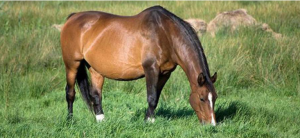 Check Broodmare Hay for Fescue: Fescue…what’s not to love? Landowners throughout North America and in other parts of the world such as New Zealand and Australia enjoy its numerous benefits. The perennial’s hardiness allows it to thrive despite heavy hoof traffic, intense grazing, and adverse growing conditions.
Check Broodmare Hay for Fescue: Fescue…what’s not to love? Landowners throughout North America and in other parts of the world such as New Zealand and Australia enjoy its numerous benefits. The perennial’s hardiness allows it to thrive despite heavy hoof traffic, intense grazing, and adverse growing conditions.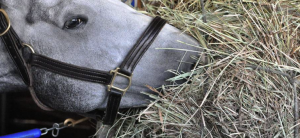 Cold-Weather Horse Diets: Those cold winter months of mud, slush, and frozen ground…owners dread them. The horses? For the most part, they don’t seem to care. In fact, many seem to be energized by the crisp air and chilly breezes.
Cold-Weather Horse Diets: Those cold winter months of mud, slush, and frozen ground…owners dread them. The horses? For the most part, they don’t seem to care. In fact, many seem to be energized by the crisp air and chilly breezes.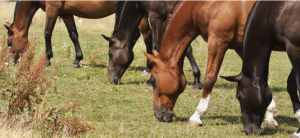 Managing Horses on Declining Pasture: As the growing season winds down or as drought sets in, horse owners must provide horses with an appropriate alternative forage to fulfill fiber requirements. In most cases, this involves the use of hay. Although other products such as haylage or hay cubes are appropriate and sometimes fed.
Managing Horses on Declining Pasture: As the growing season winds down or as drought sets in, horse owners must provide horses with an appropriate alternative forage to fulfill fiber requirements. In most cases, this involves the use of hay. Although other products such as haylage or hay cubes are appropriate and sometimes fed.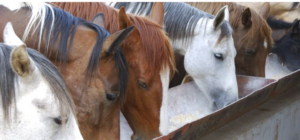 Keep an Eye on Calcium Balance: It is common knowledge that calcium is an essential mineral for strong and healthy bones and teeth in horses. Its importance in the nutrition of late-pregnant mares, weanlings, and growing horses. Especially young racehorses. Most horse people are aware of the increased requirements for calcium in these types of horses.
Keep an Eye on Calcium Balance: It is common knowledge that calcium is an essential mineral for strong and healthy bones and teeth in horses. Its importance in the nutrition of late-pregnant mares, weanlings, and growing horses. Especially young racehorses. Most horse people are aware of the increased requirements for calcium in these types of horses.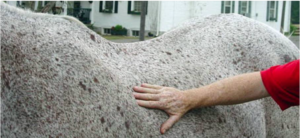 Why Can’t I Get My Horse Fat? Do you know of a hard keeper that has gained or maintained weight consistently on a feeding program until one day he just doesn’t? The needle hovers near a body condition of 5, lulling you into a sense of accomplishment. Then it begins to shift left, ever so slowly. As time goes on, your hard work melts away. The metabolic middle ground known as moderate body condition seems more distant than ever. The ribs peek out from his barrel; the vertebral chain juts above his topline musculature; and the neck no longer carries even a single globule of fat.
Why Can’t I Get My Horse Fat? Do you know of a hard keeper that has gained or maintained weight consistently on a feeding program until one day he just doesn’t? The needle hovers near a body condition of 5, lulling you into a sense of accomplishment. Then it begins to shift left, ever so slowly. As time goes on, your hard work melts away. The metabolic middle ground known as moderate body condition seems more distant than ever. The ribs peek out from his barrel; the vertebral chain juts above his topline musculature; and the neck no longer carries even a single globule of fat.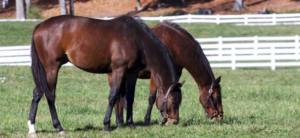 Pasture Adequacy: Are Your Fields Doing Their Job? As herbivores, horses require large volumes of forages for optimal well-being. Just how much forage do horses require, though?
Pasture Adequacy: Are Your Fields Doing Their Job? As herbivores, horses require large volumes of forages for optimal well-being. Just how much forage do horses require, though?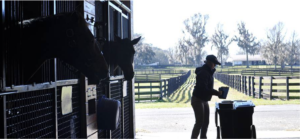 Feedstuffs for Horses: All About Beet Pulp. Fifty years ago, many knowledgeable horsemen would find it difficult to identify beet pulp or its potential value as a feedstuff for horses. Though its usefulness is now cemented among horse owners, beet pulp can still cause some confusion. Kathleen Crandell, Ph.D., a nutritionist for Kentucky Equine Research, answers eight questions about beet pulp and its role in equine nutrition.
Feedstuffs for Horses: All About Beet Pulp. Fifty years ago, many knowledgeable horsemen would find it difficult to identify beet pulp or its potential value as a feedstuff for horses. Though its usefulness is now cemented among horse owners, beet pulp can still cause some confusion. Kathleen Crandell, Ph.D., a nutritionist for Kentucky Equine Research, answers eight questions about beet pulp and its role in equine nutrition.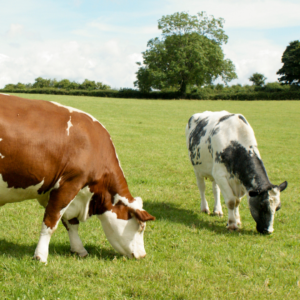 Best practices for managing 4 types of forage: Capitalize on your forage management to optimize cattle nutrition.
Best practices for managing 4 types of forage: Capitalize on your forage management to optimize cattle nutrition.